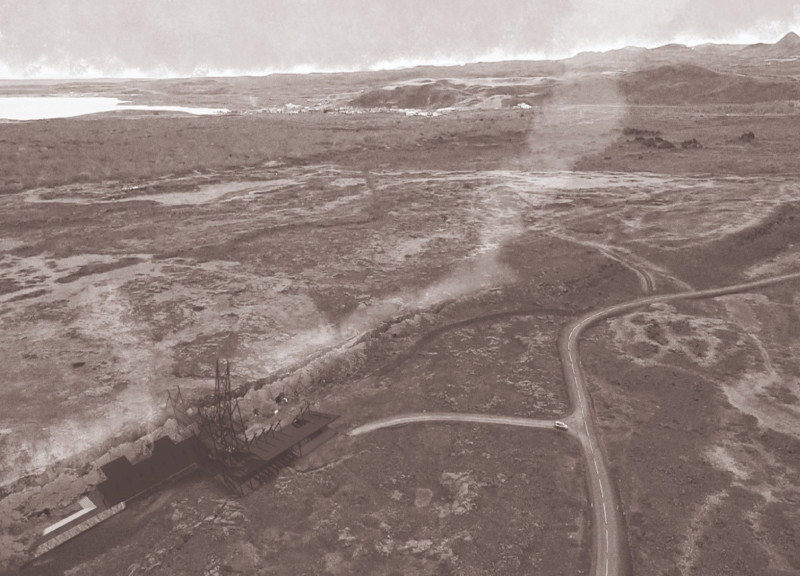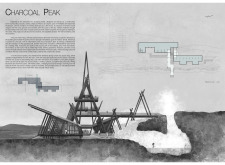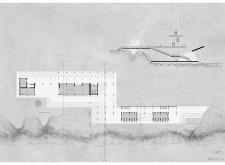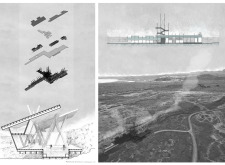5 key facts about this project
The primary function of Charcoal Peak is to provide wellness services through thermal bathing. The design supports this function by incorporating spaces for bathing, relaxation, and social interaction, all while maintaining a focus on user comfort. The building layout comprises two distinct sections: one for visitor services and another dedicated to bathing amenities. This separation promotes a streamlined flow of foot traffic, enhancing the overall visitor experience.
The use of charred wood as the primary material is a distinctive feature of Charcoal Peak. This choice reflects the local environmental context and serves both functional and aesthetic purposes. Charred wood not only ensures durability but also connects the architecture to the surrounding volcanic landscape. The building's form consists of angular, triangular shapes, which evoke the natural contours of the terrain and contribute to a sense of shelter. The incorporation of glass elements allows for transparency, enabling users to maintain a visual connection with the outdoor environment while benefiting from natural light.
Sustainability is a core principle driving the design of Charcoal Peak. By utilizing locally sourced materials, the project minimizes environmental impact and showcases resilience against the elements. The structure's orientation and materials are engineered to respond effectively to the local climate, optimizing energy efficiency.
Through careful planning and innovative design techniques, Charcoal Peak stands apart from typical bathing facilities. The architectural approach emphasizes fluidity between indoor and outdoor spaces, allowing for seamless transitions. Unique features such as terraces for outdoor lounging and dedicated zones for different visitor needs enhance the overall experience.
For those interested in a comprehensive understanding of Charcoal Peak, it is advisable to explore architectural plans, architectural sections, and architectural designs related to the project. Examining these elements will provide deeper insight into the architectural ideas that define this innovative thermal bathing center.


























